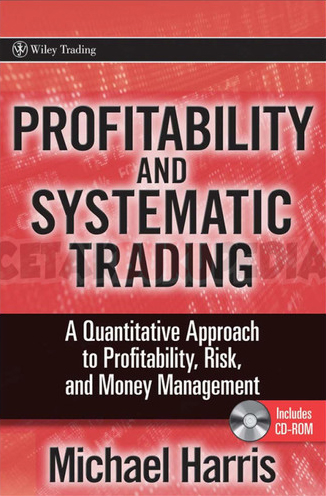Cut loss strategy is a way to stop your trading loss before it destroys your account. There are some methods to approach and we will learn two of them in this article.
Cut loss means cutting losses. It is one of the risk management in investing, which is defined as selling shares in a loss condition (below the capital price) to avoid further losses.
The cut loss strategy may seem foreign to your ears at first glance. The reason is, there are lots of trading strategy articles out there that discuss accurate entry strategies, proper take profit strategies, trading strategies using indicators, and many other methods. All aim to maximize profits in forex trading.

So how can we make a profit if asked to make a cut loss?
Yes, cutting losses is sometimes something scary for some traders. The reason is, they have to admit the loss they get. Sometimes, it is also equivalent to cutting the profit that has been previously accumulated. Hence the term "murder your darling" when it comes to cutting losses.
Contents
Why is Cut Loss Strategy Important?
Many traders do not rush to close positions in acute floating loss because they're still hoping that the price will turn back in their expected direction. This situation is dangerous because every decision in trading must be based on objective analysis, both from a fundamental and technical perspective.
In forex trading, no one knows where the price will move. Even though you can predict its movement with technical and fundamental tools, it is still possible that the price will not go your way. The only way to survive unexpected market movements is to implement a cut loss strategy. A Day Trader may get several wins in a day. However, if they let a floating loss position move out of control, the risk could wipe out all the other position's profits.
No one wants to lose money on a trade. It is a confession that people made a misjudgment for. The fact is, if you can put your personal feelings aside and close one bad position, you can lose a small amount of money and still be financially and emotionally fit enough to spend the next day. Cutting your losses prevents you from taking a catastrophic fall from which you will be unable to recover.
When you choose to wait for the price to recover without doing any proper research, you will just be waiting for the inevitable defeat. In most cases, the price will likely continue to move in the same direction if the momentum is still strong. It can take a long time to turn back to your desired direction. And before the price can reverse, the accumulated losses may destroy your account before you know it. So, in cases like this, you need to cut losses.
When is the Right Time to Cut Losses?
Actually, forex brokers are equipped with a feature called margin call that will automatically close all positions when the amount of losses is approaching your balance limit. But this practically means that you have run out all of your capital and you need to deposit some money to continue to trade.
Before it comes to such situation, there are several options of cut loss strategies to choose and each of them comes with its pros and cons. The simplest way would be closing your losing positions manually at a point where you think you can't take any more losses or where your analysis proves that the price won't be turning back. And so, you need to analyze the situation in the forex market intensively. By analyzing the market situation intensely, you will get a strategic position to cut loss in the most ideal place.
Another method is to use a Stop Loss order that will let you choose at which level your loss can be stopped. A more advanced way to go about it is using the hedging strategy. How do the two methods work?
Using a Stop Loss Order
Stop loss means placing an automatic order to close a position when the price touches a certain level, which limits where we are "able to withstand the maximum loss". We can determine for ourselves how much loss we can bear when placing this stop loss.
It is a forward order to sell an asset when it exceeds a certain price level. By that mechanism, it can be said that stop loss is able to both minimize a trade's loss and their chance to earn a profit should the price reverse around the stop loss area.
Here's an illustration:
If you buy EUR/USD for 1.1200 and set a stop loss order for 1.1180, the stop loss order will be executed when the price hits 1.1180, preventing more losses when the price continues to fall. Your stop loss order will not be executed if the price never falls below 1.1180. On the other hand, you may lose your chance to recover from the previous loss if the price turns out to be reversing around $1.1178 and continues to rise up to, let's say, 1.1220.
The dilemma makes some traders avoid placing stop losses altogether. However, it should be noted that price reverse around a stop loss area is not the fault of the stop loss order. In fact, it comes from the trader's incapability to choose the right level as their stop loss target. Hence, it is important to choose a stop loss level carefully. There are strategies and technical tips to pick the most ideal stop loss so your position won't be stopped at an inconvenient level.
For instance, a typical stop loss order for short selling is just above a "swing high." A swing high finds resistance at an upper price level, similar to how a swing low finds help at a bottom price level. When the price increases and then falls, this happens. Since you want to trade in the trend's path, the swing highs should be going down when looking for short trades. Other ideas to locate a stop loss level are by spotting the nearest support or resistance level, previous Price Action signals, etc.
Don't Get Carried Away
When placing a stop loss, you may tend to underestimate the risks. An example is when the price moves against you. Here you might think about taking it easy because you feel that you have set a stop loss order. However, are you aware that the price movement is leading to something called a loss? Why do you even let the price move to reach the stop loss in the first place? The best option here should be to immediately make a cut loss if you feel that the price has confirmed a new trend.
On the other hand, when your position is gaining profits, it is better to gradually lock them before the price takes a different turn and reaches your stop target. In forex trading, just a little carelessness can change your outcome in an instant; from a winner to a loser. When the price moves closer to profit, you will sometimes see the momentum starting to slow down. Do not be too rigid and have a principle that you must take profits at a predetermined Take Profit level. If the momentum has slowed down, this is usually a sign that the price will experience a reversal. End your waiting and immediately take the profit before everything is gone.
Hedging as a Cut Loss Strategy
Hedging or Locking means buying and selling simultaneously or without closing a position. To put it another way, if you have a long trade open on a currency pair, you will also open a short trade if the value fell below a certain threshold. As a result, the loss on your long trade is offset by the benefit of your short trade. Direct hedging, also known as a perfect hedge, is the name given to this technique.
This type of trading aims to ensure that the trader makes a profit no matter what happens in the market. In practice, we can use both pending orders and instant execution to hedge to protect a position.
It entails far more than just taking long and short positions. Hedging or locking is chosen by many traders who want more flexible loss limits. It means that losses are still limited but still have hope that a negative floating position will be closed with a profit. If hedging is managed properly, it will make us more likely to close a position with a profit. However, it takes patience, thoroughness, and discipline in margin management.
See Also:
A Risky Option
Many hedging resulted in the additional negative floating collection, which eventually ended up in a margin call. The main difficulty in hedging is related to margin management and the strategy to open the locking. Opening a locked position for inexperienced traders often creates doubts; we often doubt when is the right time to open the locked position or which position should be closed before the other.
The question that arises is usually: "Should I close now or not? If I close now, the trend might still continue. If it's not closed now, the trend may reverse and cancel out the profits."
Indeed, it requires patience and also high confidence when opening this locked position. Many fellow traders who use this cut loss strategy suggest opening locked positions, maintaining the positions, and scalping to cover losses if the trend continues. This method certainly requires psychological maturity so that you are not easily provoked by the price movements, which is sometimes "deceiving". Another suggestion for those who want to use this method is to only do it if the available margin is greater than the used margin. If your margin happens to be small, it's better to use stop loss or just manual cut loss.
Which One to Choose?
Well, it depends on the "style" of each trader. Stop loss is more certain because a position will be automatically closed when we think the loss is too big. Of course, we have calculated the size of the losses for each of these positions in our trading plan. So, psychologically, stop loss does not cause doubts.
If you choose to cut losses manually, remember that cutting losses prematurely and constantly monitoring the market are two actions that the average trader easily misunderstands. In this case, make sure to cut losses only after you receive a confirmation signal from a tested trading system. Say you use three indicators for Entry and Exit, then do not make a cut loss if the three indicators do not confirm each other's signal to justify the exit action.
You should not just cut losses just because you have a feeling that the price will continue to go up or down. There must be a proven basis for the analysis behind it.
Whichever alternative you choose to cut losses, it all depends on you. As a trader, you need to know how to apply the right cut loss strategy. It will help if you put in more effort. Understand that the market can move in unexpected directions, and the best way to deal with this is to always adapt to these changes. Always have a plan so that you do not trade relying solely on emotions. If you suddenly feel emotional about your current trading position, finish it off and don't enter the market until that emotional influence is gone.
My fellow traders said that trading requires guts and a strong mentality. Especially, of course, when you have to bear the risk of loss and take action to prevent greater losses. Do not let it piles up or the broker will be forced to take action by initiating the margin call.

 Dedicated FREE FOREX VPS
Dedicated FREE FOREX VPS Free FOREX Virtual Private Server
Free FOREX Virtual Private Server MT4 Demo Contest, Get $500
MT4 Demo Contest, Get $500 Sign Up for an Account, Claim 60% Deposit Bonus
Sign Up for an Account, Claim 60% Deposit Bonus Free MT4/MT5 VPS 2024
Free MT4/MT5 VPS 2024 Send E-mail and Get Free Merchandise
Send E-mail and Get Free Merchandise $1K Refer a Friend Bonus for Pepperstone Pro clients
$1K Refer a Friend Bonus for Pepperstone Pro clients Maximize Your Earnings with 100% Deposit bonus
Maximize Your Earnings with 100% Deposit bonus Trade to Win, $5,000 Monthly Demo Contest
Trade to Win, $5,000 Monthly Demo Contest Claim 30% + 15% Deposit Bonus from LiteFinance
Claim 30% + 15% Deposit Bonus from LiteFinance








2 Comments
Miranda
Apr 12 2022
For me, if we have taken the right analysis, we should just use stop loss. Because the results are certain.
Ramsey
Nov 18 2022
Miranda: I am also agree. I think most traders use stop loss as a tool to further protect against floating losses. But I agree with some traders who combine cutloss and stoploss. Combining these two methods, I think it's also a good idea. Imagine that you have done the right analysis just right you said and have already placed your stop loss. As you know, the forex market is very volatile, so your analysis and strategies sometimes going wrong. If you set your stop loss too farr, you can reduce your losses first with cut loss However, for daily use, it is better to use stop loss than cut loss